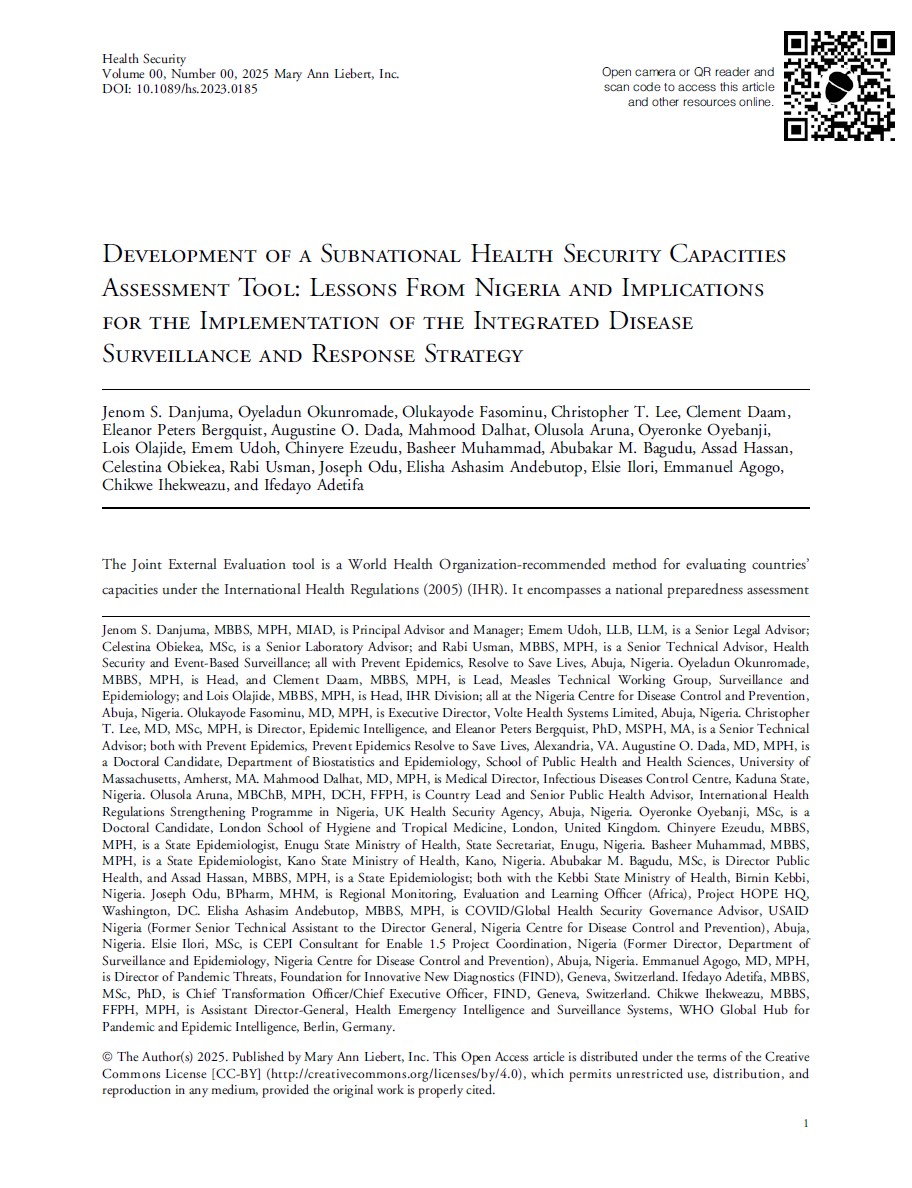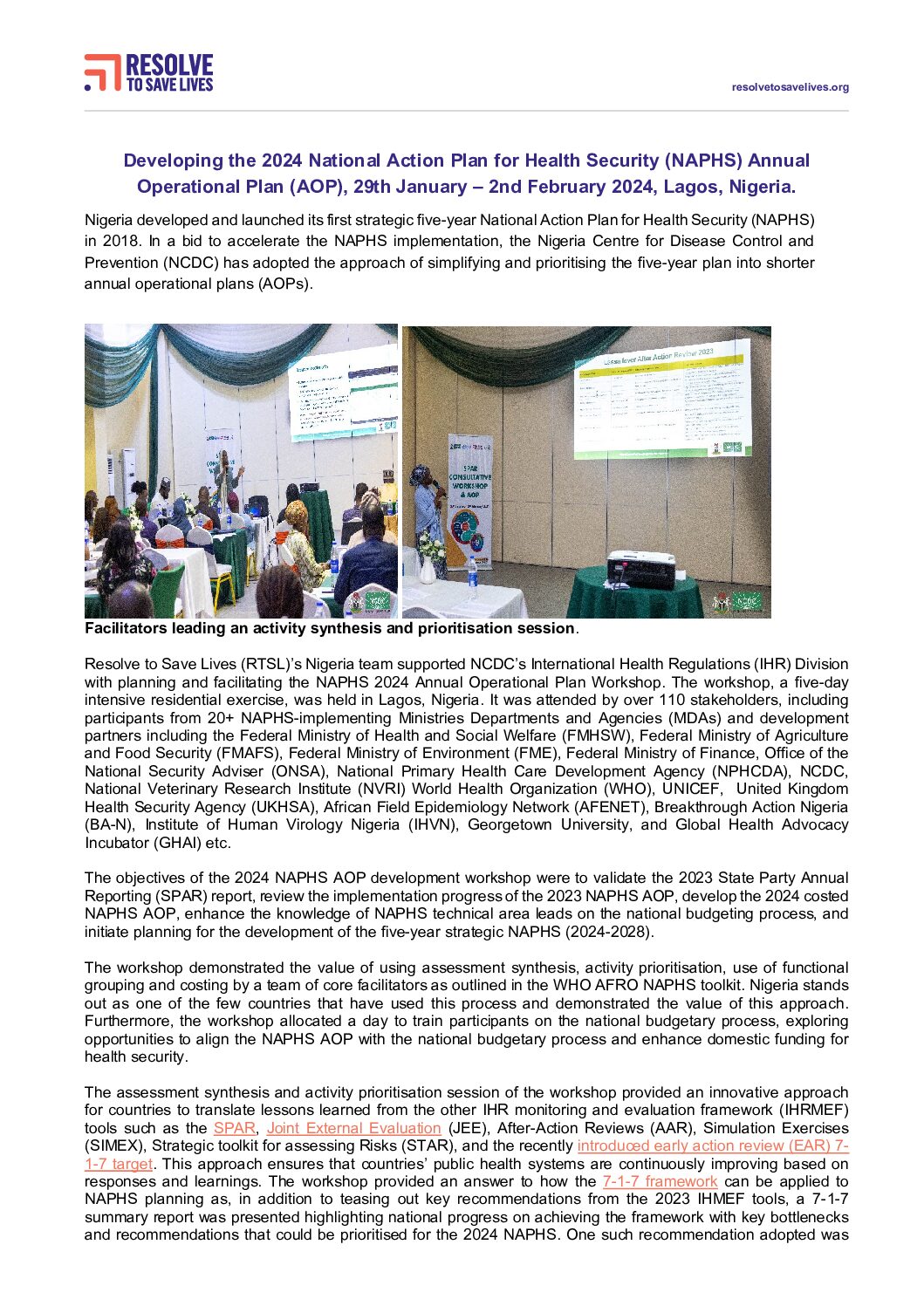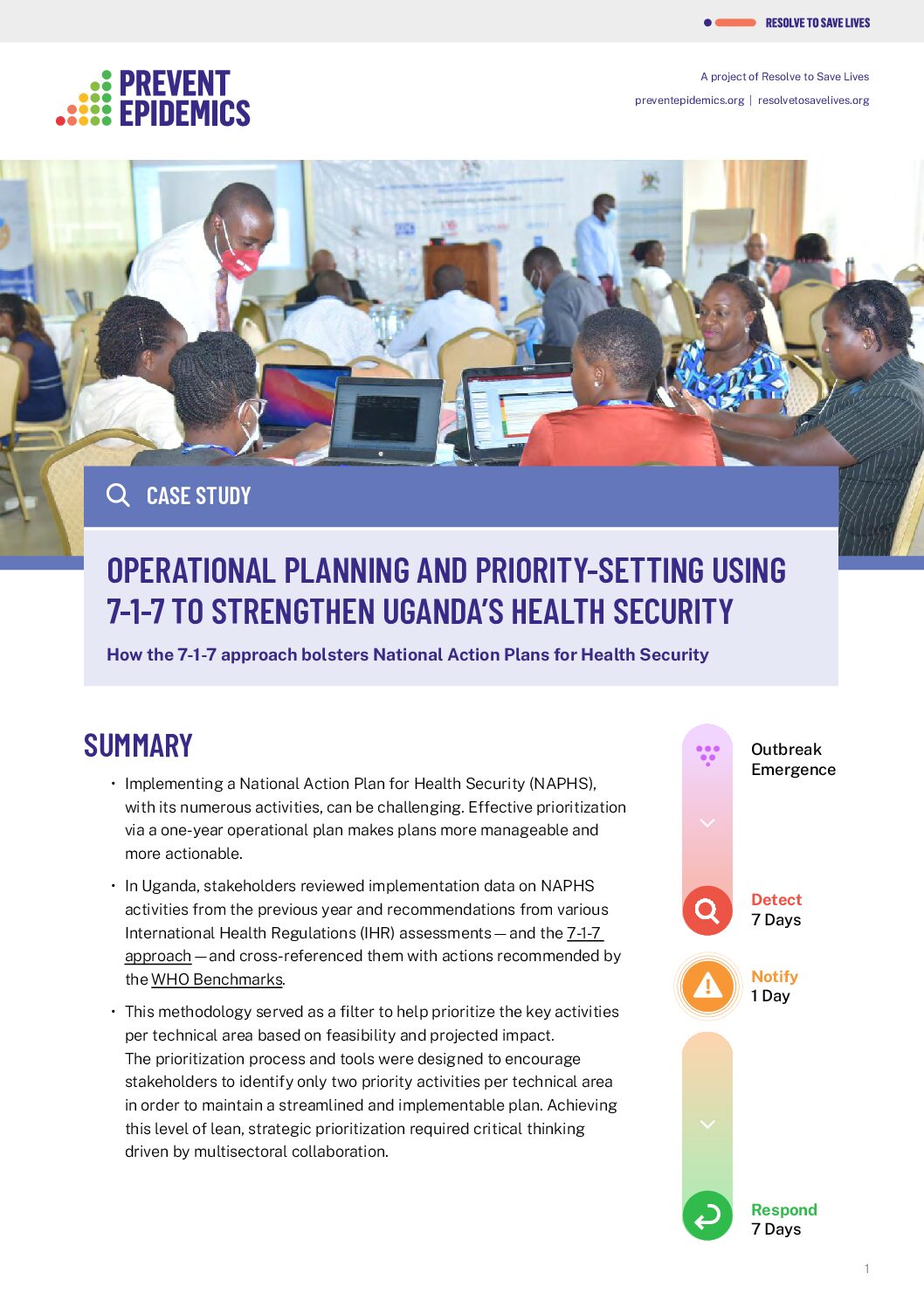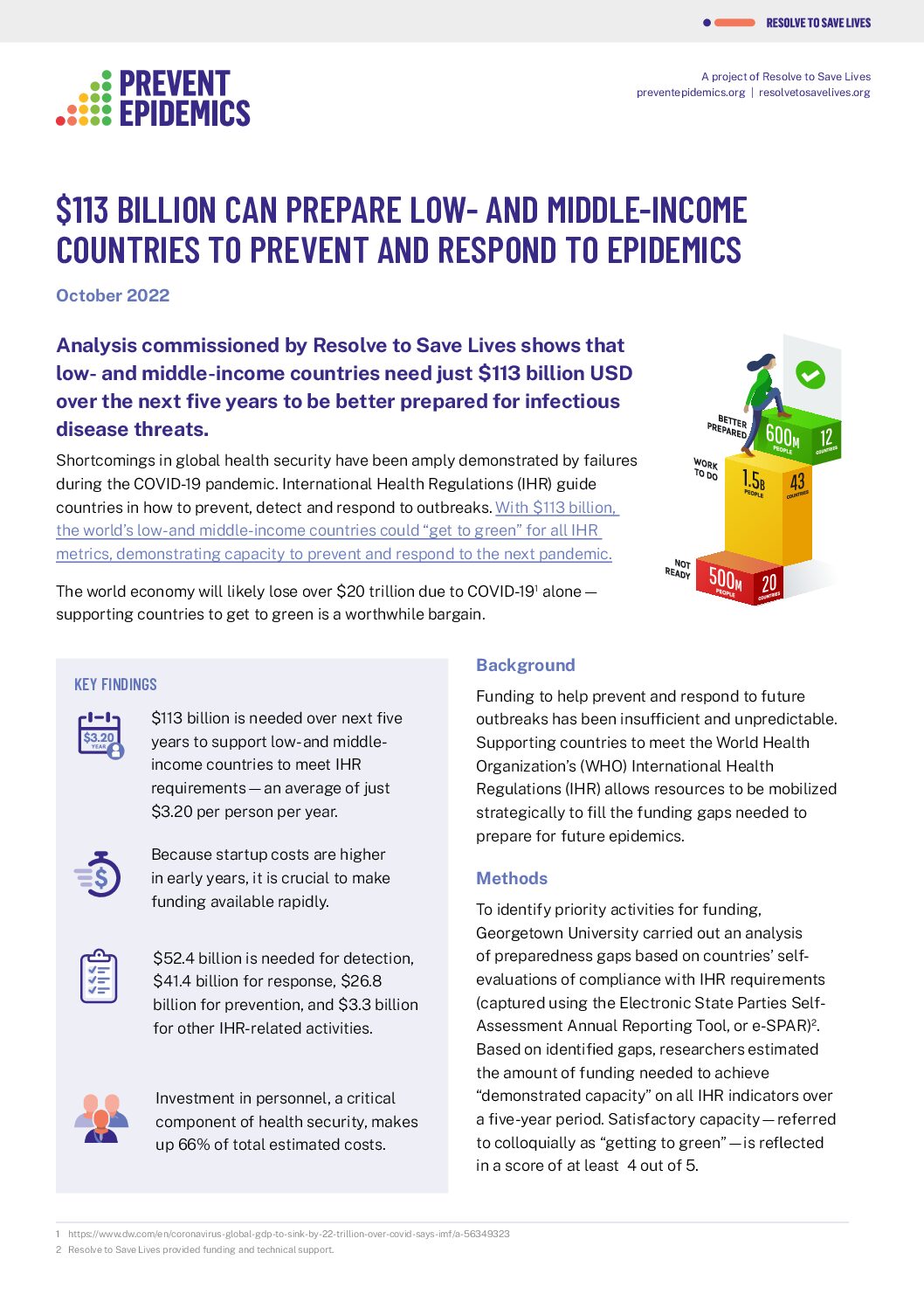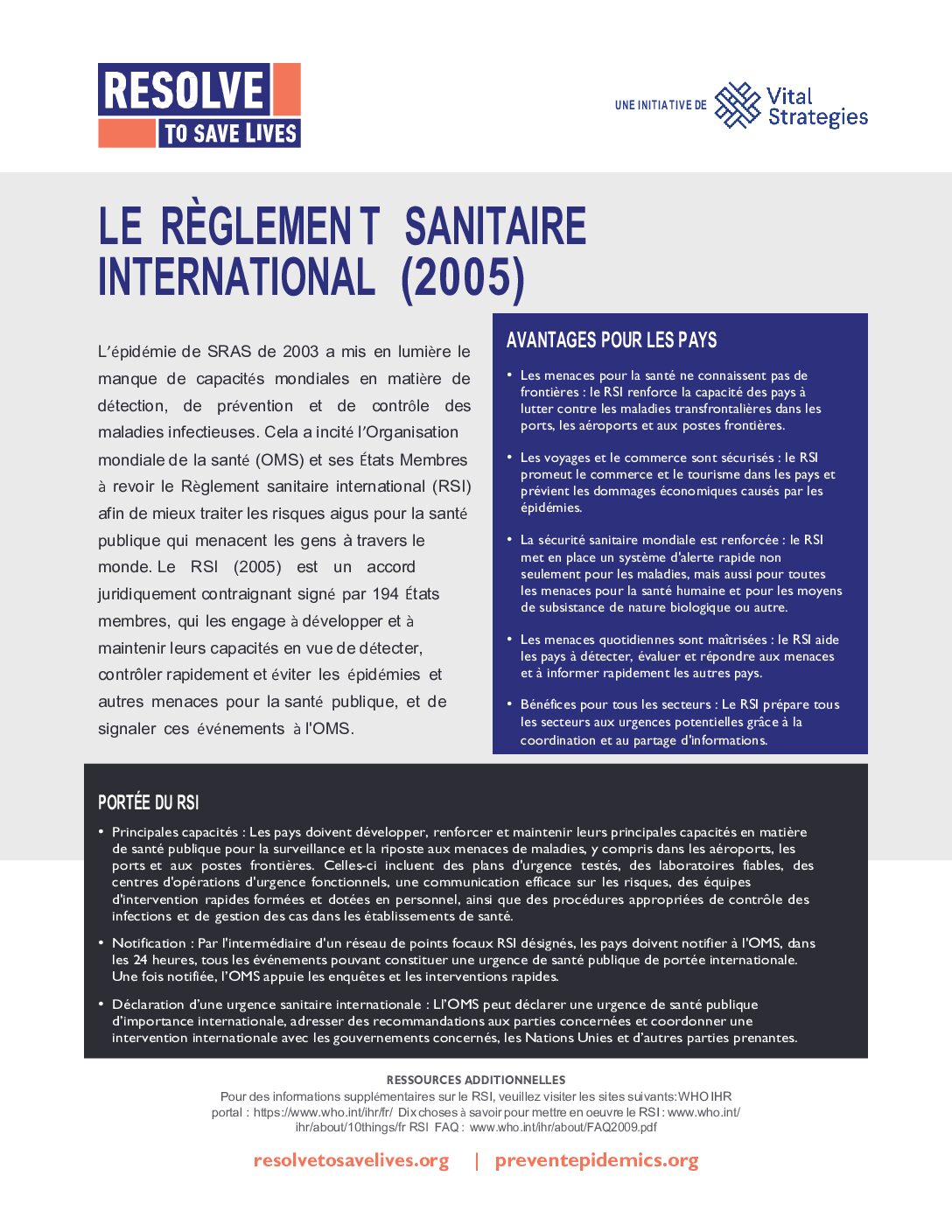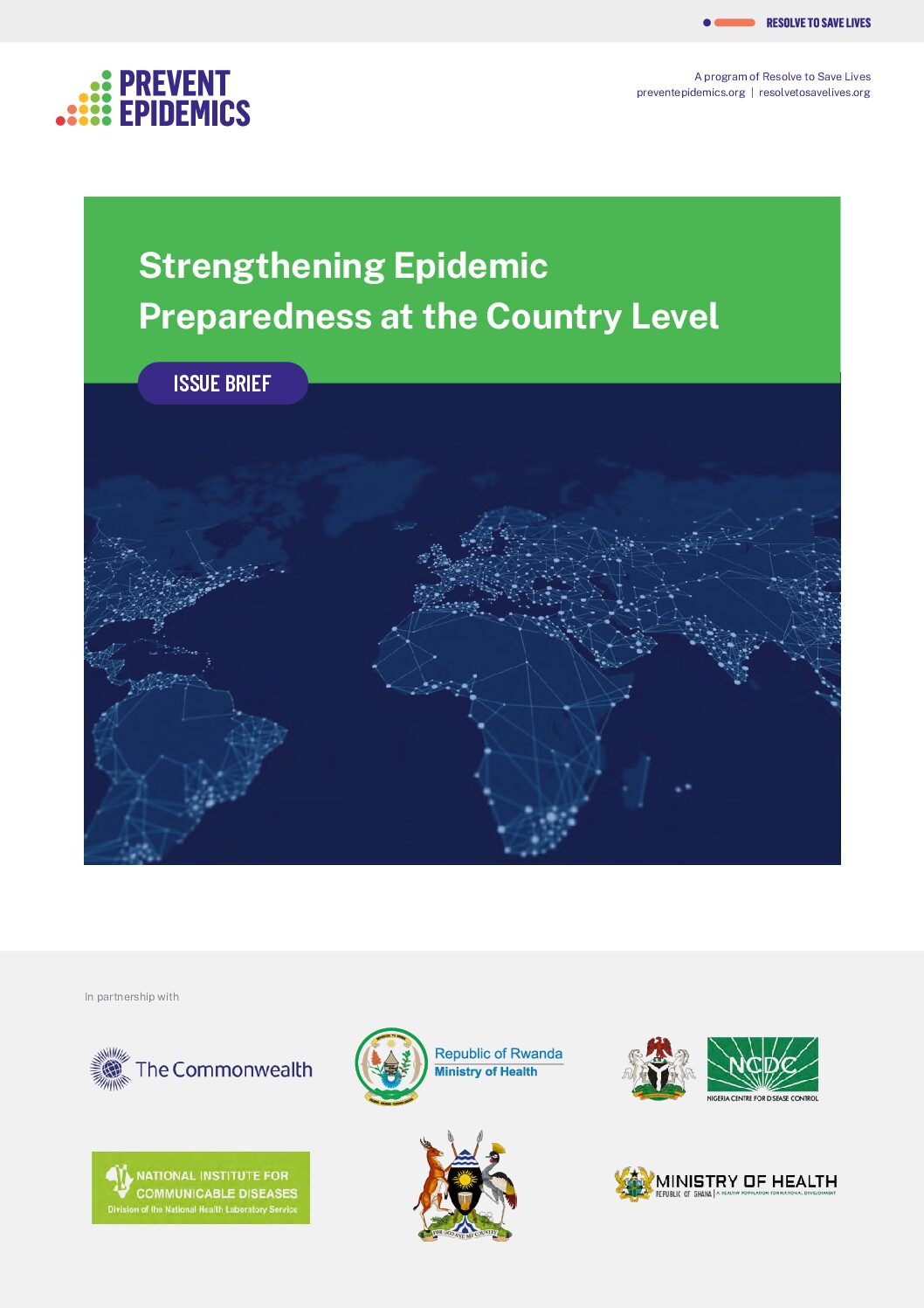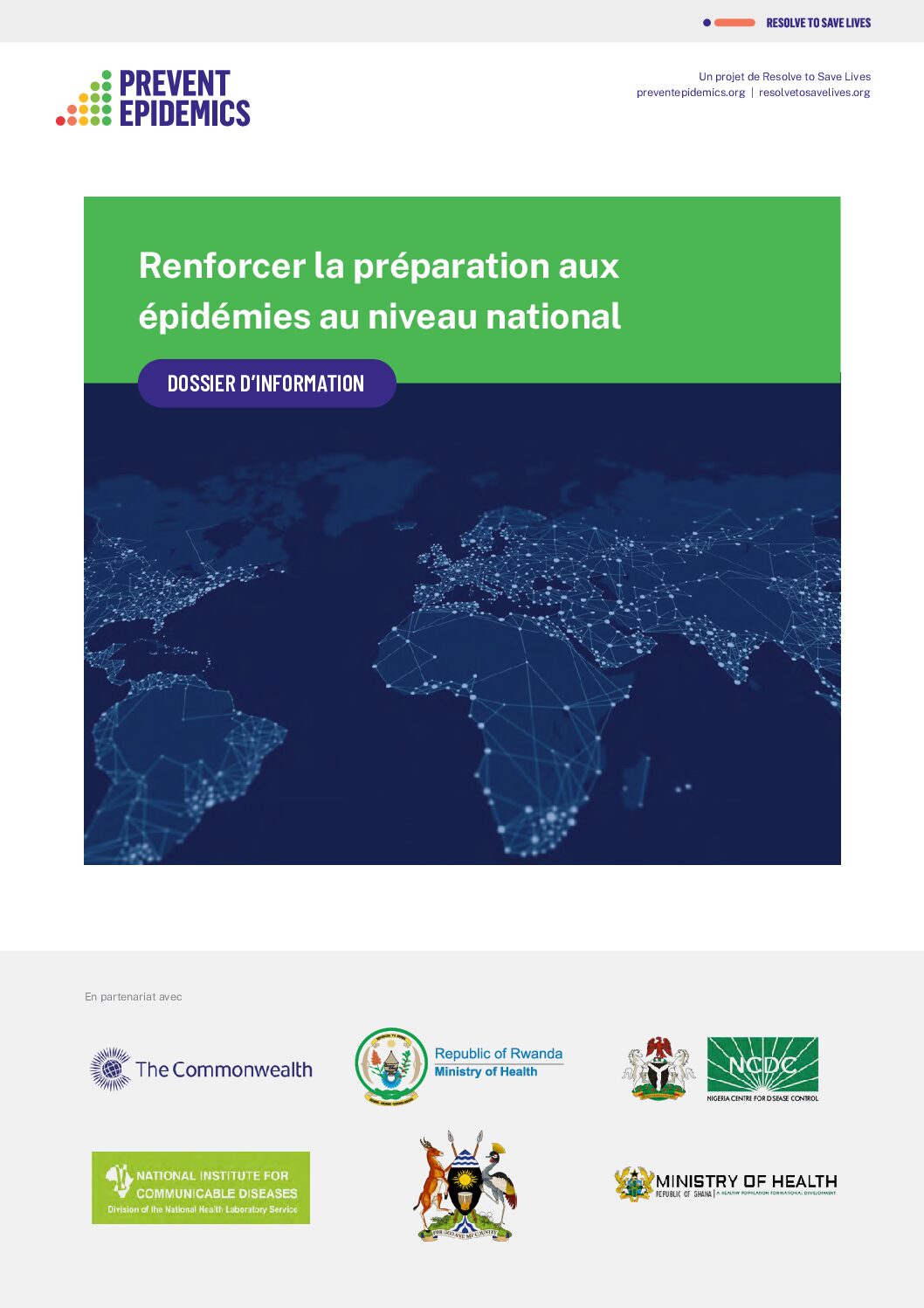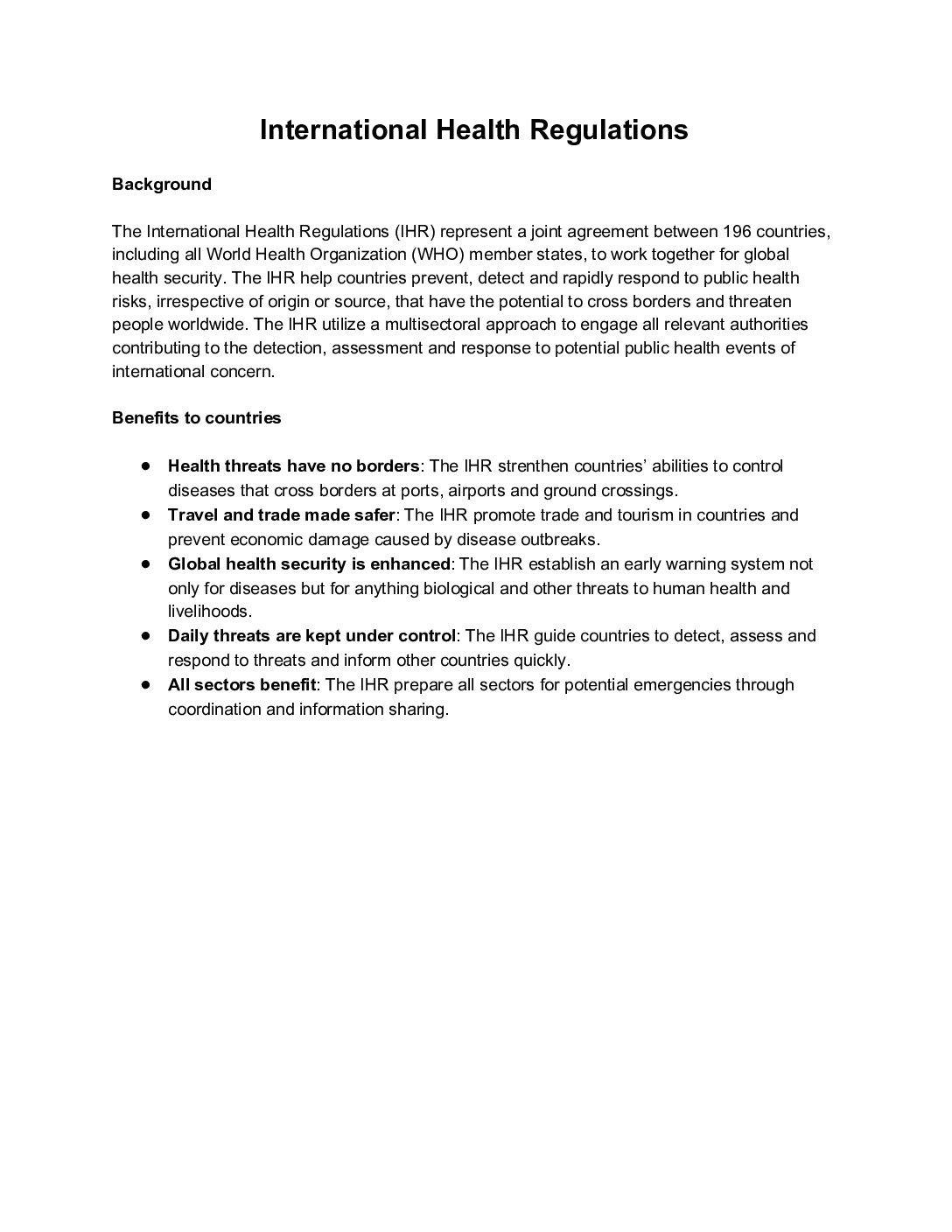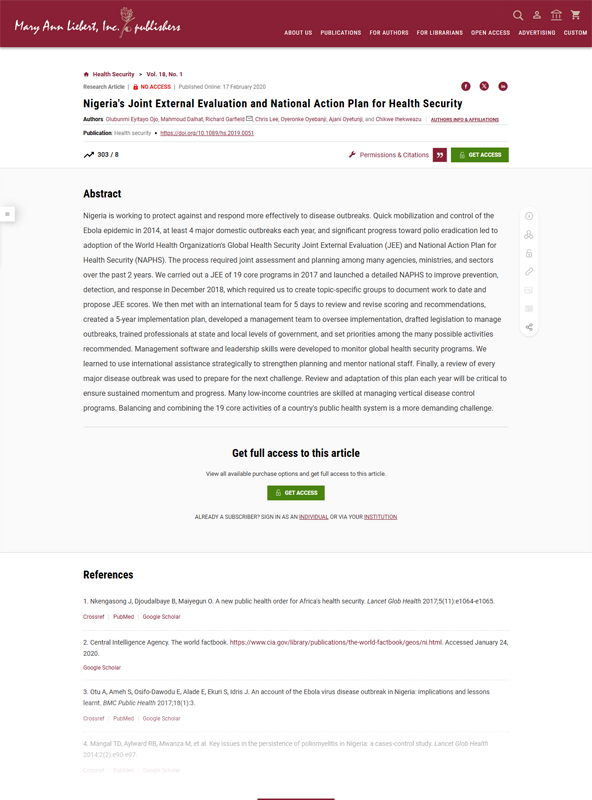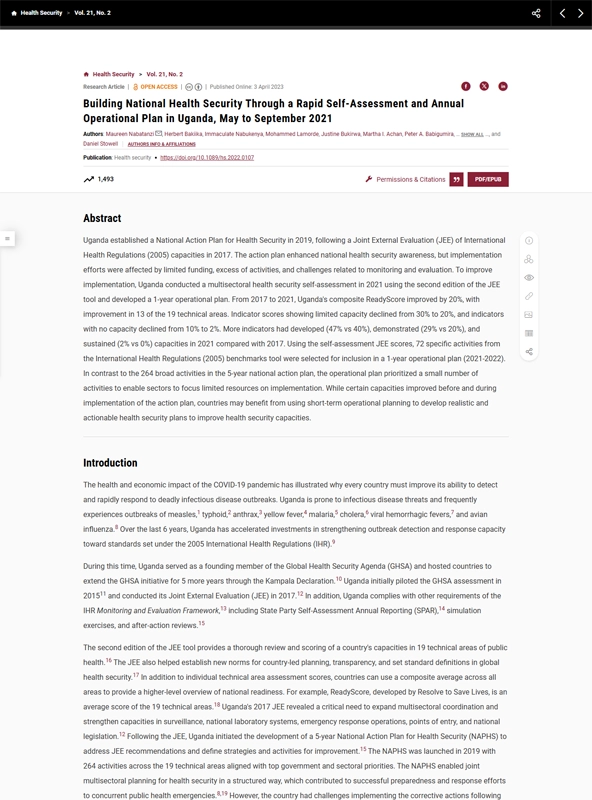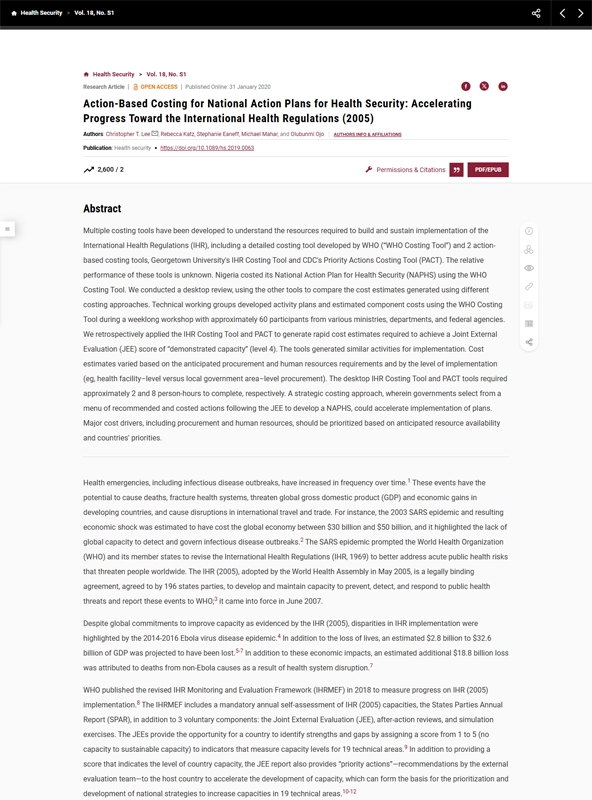Resource Library
National health security
Health Security
How can health security capacities be measured at the subnational level? This tool includes 14 technical areas and 35 indicators to assess capacities in federated systems.
Resolve to Save Lives
Resolve to Save Lives
Resolve to Save Lives
Resolve to Save Lives
Resolve to Save Lives
Resolve to Save Lives
Resolve to Save Lives
Resolve to Save Lives
Resolve to Save Lives
Resolve to Save Lives
Health Security
Nigeria’s adoption of the World Health Organization’s Joint External Evaluation (JEE) and National Action Plan for Health Security (NAPHS) will strengthen its national health security efforts.
Health Security
Uganda improved its epidemic readiness by 20% by leveraging a rapid self-assessment and developing a focused, short-term operational plan that improved long-term strategy.
Health Security
How much does health security cost? Testing three IHR costing tools on Nigeria’s NAPHS revealed surprising variations—strategic choices could be the key to streamlined IHR implementation.
